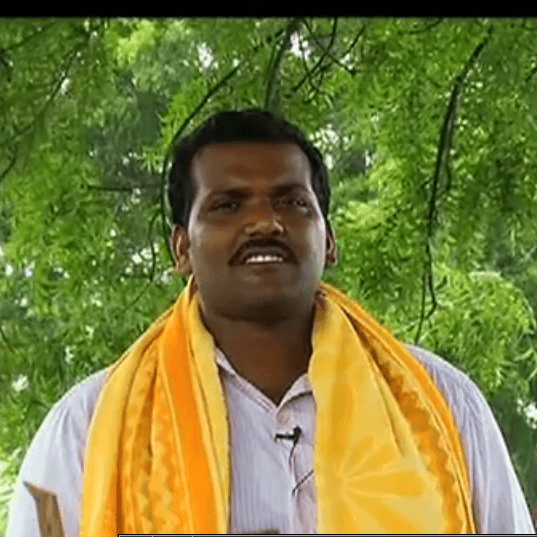
Katta Ramakrishna
How Katta Ramakrishna Made Cotton Farming More Interesting With High-Density Plantation Technology
Katta Ramakrishna is a progressive farmer from Obannapalem village near Naguluppalapadu Mandal in Prakasam District of Andhra Pradesh state. He has successfully implemented high-density planting technique in his cotton field as per the scientists’ suggestion, which resulted in high yield with improved productivity.
This innovative initiative taken by Katta Ramakrishna to put more plants in a little area, ultimately boosted up the yield. By taking this step he produced 10 quintals per acre which made him won national recognition from Indian Council of Agriculture (ICAR) and he was awarded “Babu Jagjivan Ram Abhinav Kisan Puraskar” in 2013.
Later on, with the guidance of District Agriculture Advisory and Transfer of Technology Center, Katta Ramakrishna planted 12500 plants in an acre, and this he implemented in his 5 acreage plot and got the yield of 22 quintals from an acre.
“For every penny invested by me, I got an equal amount as profit in return”
– Katta Ramakrishna said by proudly showing his award that he received from Union Agriculture Minister Radha Mohan in New Delhi.
Minimally Rs 5, 000 per acre was added to the investment of Rs 45, 000 per acre that the farmer did in the beginning.
“Normally an ordinary farmer used to plant 8, 000 cotton plants in an acre and get the yield of 10 to 15 quintals. But they don’t know that increasing the plant density can increase the cotton yield.”
– Said by the Senior Scientist Ch. Varaprasada Rao, DOT Centre.
Encouraged by the good productivity of white gold, Katta Rama Krishna said that –
“In the coming time I am going for plant density of 16, 000 per acre to aim at 25 to 20 quintals of yield.”
His achievements
• He has been honoured by various state and national organizations.
• He adopted the hydrogel technology in the cotton field for maximum water conservation that resulted in 15% increase in yield.
• Field trials for chickpea, black gram, and green gram have helped to identify suitable varieties for farmer fields in Prakasham district.
• Biofertilizers such as Rhizobium and Phosphobacteria for Bengal Gram have been adopted for increasing the yield.
• He gives preference to organic fertilizer and green manure for the cultivation.
• He uses neem seed kernel extract to counteract the pest menace.
• He has developed technology for use of tobacco waste as a fertilizer in his fields in collaboration with CTRI, Kandukar, Parkasham District.
• He refined and modified seed cum fertilizer drill to place the seed and fertilizer at different soil depths at a time. This modified seed cum fertilizer drill is useful for all types of pulses plantation to the local farmers.
• The innovative technologies and improved package of practices followed by him are published in local languages. Further, the real name farm experiences were disseminated and broadcasted through various radio tasks and public meetings.
• He has become a role model for others in the area and is an inspiration for them.
Message
“Farmers should get their soil tested by the experts to manage the micro-nutrients in soil for the better growth of crops. And in this way, they can also get best results of pest management by using fewer chemicals and pesticides.”









